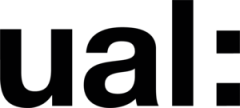This week, we submitted all our third-semester assignments, so I decided to start preparing for my FMP. I weighed the option of continuing with my original animation and modifying it, but I realized that the animation scenes contain too many character models. Most purchasable models are limited to a single pair (one male and one female), which does not align with my initial story setting. Additionally, the Chinese ancient architecture featured in the story, including palaces and traditional streets, is too grand. Without a complete scene, the project cannot be easily started. Thus, I began creating a new script, hoping to continue my undergraduate focus on psychological disorders by crafting an animation that conveys the suffering experienced by individuals with depression. These pains are depicted both literally and metaphorically within the script.
I compiled some key terms: somatization, pain, fatigue, sensory anomalies, psychological disorders, mental illness, emotional disturbance. I transformed the somatic symptoms of depression into a boy’s dependence on medication and communication, a sense of falling, and sudden tinnitus, incorporating these elements into the story. The narrative follows a boy who relies on medication to manage his depression. One day, he skips his medication, causing his surroundings to become oppressive. After taking his medication, he returns to reality.

In this stage, we will attempt to create a suitable character for this story. I’ll continue using Apollo as the base model for this animation, experimenting to achieve a stylized effect. This allows us to explore different animation styles and gain more experience in stylized production. Let’s start by changing the character’s hairstyle to quickly set an appropriate age range. The initial hairstyle made the character look younger, but the thin hair on the sides lacked depth. So, I chose the third hair model for a better fit.


